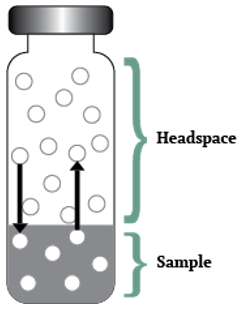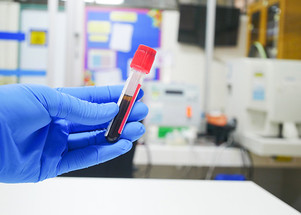11th Oct 2023
The 3 Most Common Applications for Headspace Vials
Gas chromatography (GC) is a widely-used technique for separating volatile compounds in mixtures. One specific method, headspace GC, is employed to extract and analyze limited volatile components within a mixture. This technique is invaluable when dealing with complex mixtures, ensuring accurate analysis of volatile analytes in trace concentrations while minimizing interferences. In this article, we will explore the key applications of headspace GC and the importance of choosing the right vials for this method.

To perform headspace GC, a small amount of cooled sample is added to a 10 or 20 mL headspace vial, which is then sealed tightly to withstand the pressures of the gasses that form as the sample is heated. When the sample is heated, the volatile components turn to gas and are isolated to the headspace portion of the sample vial. The liquid (or solid) matrix is left behind, and only the compounds of interest are injected and analyzed.
Common applications of headspace GC
- Blood alcohol content – determining the percent alcohol content in blood by analyzing the blood itself, rather than via a breathalyzer
- Residual solvents(in pharmaceuticals/cannabis products) – verify that solvents used in manufacturing and extraction processes are below the legal (and safe) limits
- Flavors in food – used to establish and discover the true aromatic, volatile compounds of foods that give the food certain smells, which ultimately determine how the food tastes
1. Blood Alcohol Content Analysis:
Headspace GC finds its application in determining the percentage of alcohol in blood samples, providing a precise analysis directly from the blood, bypassing traditional breathalyzer methods.
2. Residual Solvent Analysis (Pharmaceuticals/Cannabis Products):
In the pharmaceutical and cannabis industries, headspace GC is crucial for verifying that solvents used in manufacturing and extraction processes are within legal and safe limits, ensuring product quality and consumer safety.
3. Flavor Analysis in Food:
Headspace GC is employed in the food industry to identify aromatic, volatile compounds responsible for specific smells in food. This analysis helps in understanding and enhancing the flavors of various food products.
Why do I need different vials for headspace GC?
Headspace GC requires larger vials than those used in liquid chromatography or non-headspace GC. These vials allow sufficient space for volatile compounds to transition from liquid to gas states. Moreover, the vial caps must seal tightly and withstand internal gas pressures.
Crimp Caps for Chain of Custody
For analytical laboratories involved in forensic, environmental, or legal testing, maintaining an unbroken chain of custody is required. One additional benefit to using crimp top headspace (or crimp top in general) vial caps provide a tamper-evident seal ensuring the integrity of the sample. Incorporating crimp cap vials into laboratory protocols not only ensures the integrity of the samples, but also guarantees compliance with chain of custody laws and regulations.
For more information on headspace GC vials, visit our blog, “ How to Choose the Right Headspace Vial Cap ” or reach out to our friendly sales team for any questions.


